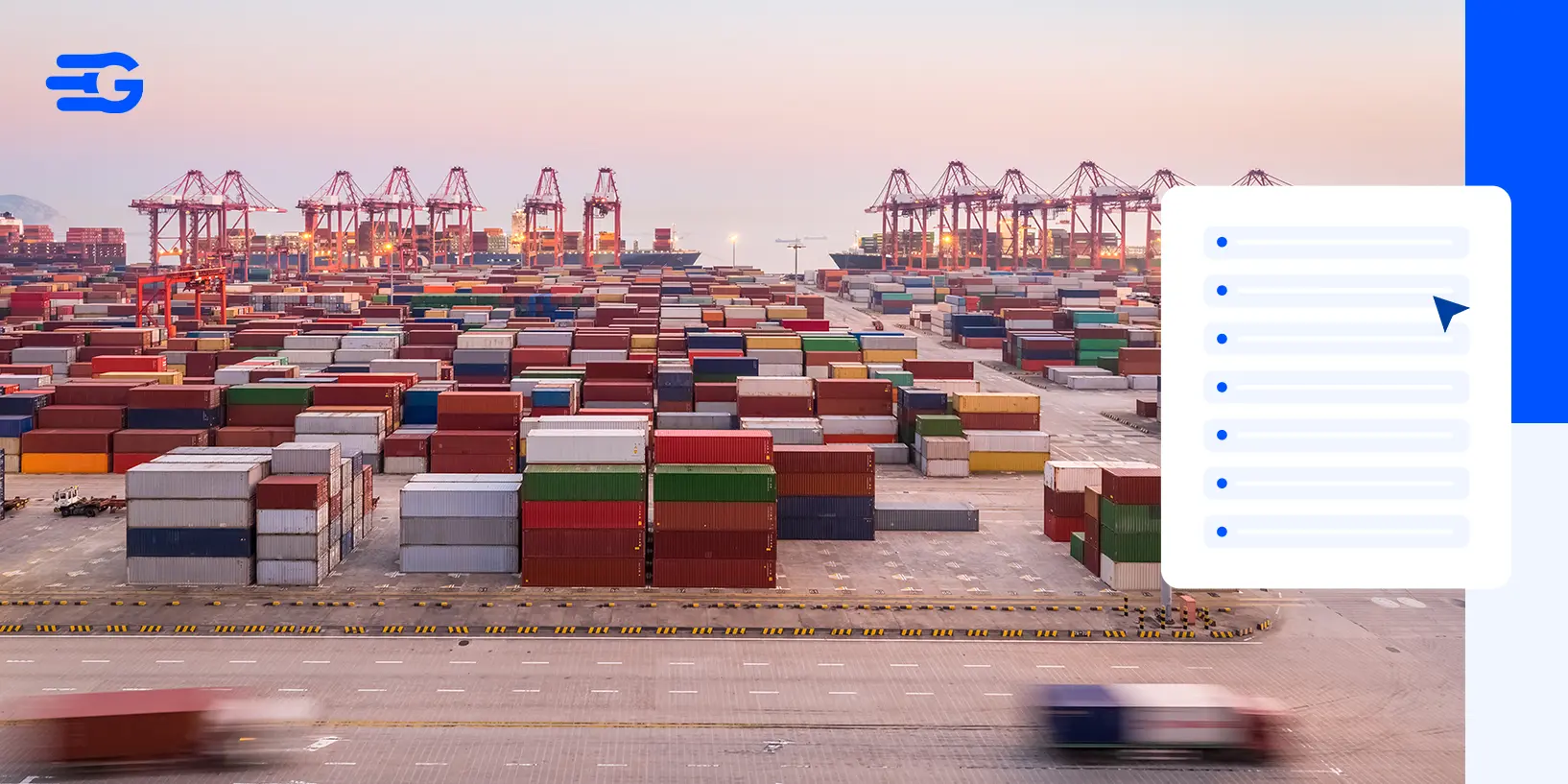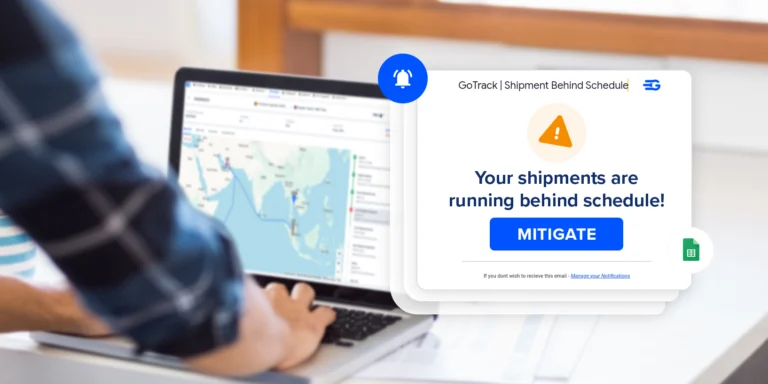7 Key Objectives Of Supply Chain Management (SCM)
Most of what makes or breaks a business happens behind the scenes, in the supply chain. Every decision about how you source, move, or deliver products ties back to a handful of supply chain objectives. Get these right, and you’ll see fewer delays, lower costs, and a team that spends more time solving real problems instead of chasing emergencies.
The real difference comes from knowing which supply chain objectives matter for your setup, and actually building your daily process around them. Set up your operation so it runs cleaner, reacts faster, and keeps customers from slipping away. Here’s what to pay attention to, and why each objective deserves a spot on your priority list.
7 Key Supply Chain Objectives
Okay, here’s where the real work starts. Let’s go through all supply chain objectives and see what’s actually worth your attention.
- Enhance Customer Service
When you look at supply chain objectives, this is never just a feel-good point. It’s the difference between a repeat client and someone never coming back. If your supply chain delivers late, or shipments go missing, your reputation takes a direct hit. Clients remember bad service a lot longer than they remember a discount.
Your whole system has to be built around making things easy for the end user: clear delivery updates, no excuses, and someone to fix things fast if anything slips. If you get this right, you’re giving people a reason to choose you over anyone else, every single time.
- Reduce Operational Costs
According to Capgemini, 58% of organizations now rank efficiency and cost optimization as their top supply chain objective.
If you really want to get ruthless with cost, you need to stop thinking like a traditional supply chain manager.
Most just chase discounts or bargain for cheaper freight. The real gains? They’re in the invisible corners nobody checks. When trying to achieve supply chain objectives that relate to cost-control, you can look out for these four factors:
- Shadow Inventory: Audit what’s actually sitting in third-party warehouses, or even lost in your network. There’s often 5-10% of total inventory that never gets accounted for until year-end.
- Contract Loopholes: Dig into your supplier contracts for “minimum order” traps, or automatic price hikes buried in the fine print. Renegotiate these every year.
- Idle Capital: Review the time between when you pay suppliers and when you get paid by customers. Shrink this gap, even by a week, and your cash flow gets a boost nobody outside finance will notice, until it matters.
- Data Leaks: Too many supply chains rely on gut feeling. Put sensors on your highest-cost assets, track the laggards, and cut or rework anything that doesn’t move as planned. Data doesn’t lie. People fudge numbers when they’re scared of heat.
The companies that scale efficiently aren’t the ones who just “spend less.” They’re the ones who squeeze out waste so effectively, it almost feels unfair to the competition.
- Improve Efficiency and Productivity
Here’s where most supply chain objectives go sideways: people think efficiency is about working harder, not smarter. But real productivity jumps happen when you question why things are done the way they are.
If someone has to chase paperwork or manually update a spreadsheet, that’s a red flag.
Automate the repetitive stuff. For instance, plug your inventory system directly into your sales channels so updates happen live, not at end-of-day.
Set up exception-based management: instead of tracking everything, only pay attention when something falls out of the norm. This pulls managers out of micromanagement and lets them focus on real fires.
Look for “process stacking” too. Combine routine tasks that usually run in sequence, and get them happening in parallel. This simple change can cut turnaround times in half, especially in warehousing and fulfillment.
- Ensure Quality and Compliance
Create systems that catch problems early and keep you one step ahead of changing regulations. If these supply chain objectives get sidelined and you only react after complaints or recalls, you end up losing ground fast. Prevention is always more effective than crisis management.
- Keep Suppliers Accountable: Build in surprise quality checks and demand up-to-date reports, not just at onboarding. If a supplier knows you’ll be checking at random, the standard never drops.
- Digitize Traceability: Relying on paper trails or scattered spreadsheets is a recipe for chaos. Use barcodes or RFID so you can instantly trace any product’s journey. If a batch goes wrong, you know exactly where the issue started.
- Stay on Top of Regulations: Assign someone (not everyone) to track regulatory changes for every market you operate in. Don’t just rely on legacy SOPs; regulations move faster than most realize.
- Rotate Internal Audits: Change up your audit teams and do unscheduled spot checks. Catch and fix silent failures before they get costly.
Do these consistently, and you can prevent most quality headaches before they start.
- Promote Agility and Responsiveness
Capgemini reports that 49% of organizations now rank agility to support new business models as a leading supply chain objective, just behind cost optimization and resilience.
Agility in the supply chain means having the structure to handle the unexpected without losing momentum. Change is going to happen: Products go out of stock, suppliers miss deadlines, weather hits shipping lanes.
What really matters is how quickly your team sees the signals and moves. When information reaches decision-makers in real time, small issues stay small. Flexible processes and authority at the ground level make it possible to redirect, reroute, and recover before problems turn costly.
| Challenge | Risk You Run | What Moves the Needle |
| Slow Data Flow | Delays grow before anyone steps in | Set up real-time dashboards and catch disruptions as they start. |
| Rigid Approval Chains | Everything grinds to a halt during shocks | Give frontline teams the right to make fast calls within guardrails. |
| No Backup Plans | One problem stalls the entire operation | Identify and line up alternates for both suppliers and logistics ahead of time. |
| Lack of Scenario Testing | Uncertainty and slow response in crises | Practice what-ifs so every role knows exactly what to do, no confusion. |
When businesses wire agility into their day-to-day, even major disruptions start to feel manageable, and customers notice the difference.
For example, Kodak leveraged GoComet to completely revamp their shipment tracking.They used advanced solutions to gain real-time visibility, cut down on shipment delays, and improved control over their operations.
- Drive Innovation and Collaboration
This one often sounds fluffy, but it’s one of the hardest supply chain objectives to get right. Most businesses say they want innovation, but their day-to-day still runs on decades-old habits and “that’s just how it’s done.”
Collaboration is the launchpad. The tighter your supply chain partners work together, the more likely you are to spot a smarter solution before the competition.
A few sharp moves here:
- Joint Planning: Get suppliers and even key customers into the loop on major demand forecasts. More brains, fewer surprises.
- Pilot Programs: Test new tech or processes in a small part of your chain. See what works in real conditions, then roll it out bigger if it delivers.
- Feedback Loops: Build regular review sessions, not just with your internal team but with external partners. It’s how you catch bottlenecks or new opportunities before they become old news.
Companies who make this a habit often unlock cost savings or time reductions no one saw coming.
- Foster Sustainability and Risk Management
Sustainability and risk management actually protect your business from the ground up. Environmental checks and ethical sourcing, when handled proactively, prevent hidden problems that can spiral later.
Risk mapping exposes weak spots in your chain long before a crisis, giving you room to build stronger links and backup plans. This attention upfront makes it easier to spot hidden costs, avoid regulatory trouble, and keep operations moving no matter what. Companies that set clear supply chain objectives around sustainability and risk tend to sidestep disasters, operate more efficiently, and gain a real edge as expectations change across the industry.
Closing Thoughts
Most businesses talk about supply chain objectives, but only a few actually align them with their day-to-day decisions. The difference shows up in speed, cost, and how well you recover from shocks.
Take a hard look at your current setup: are you really supporting all supply chain objectives, or just reacting when things break? If you see room for sharper systems or want to benchmark your approach, GoComet can show you what “better” looks like in practice. Book a demo and see where your supply chain can level up.





